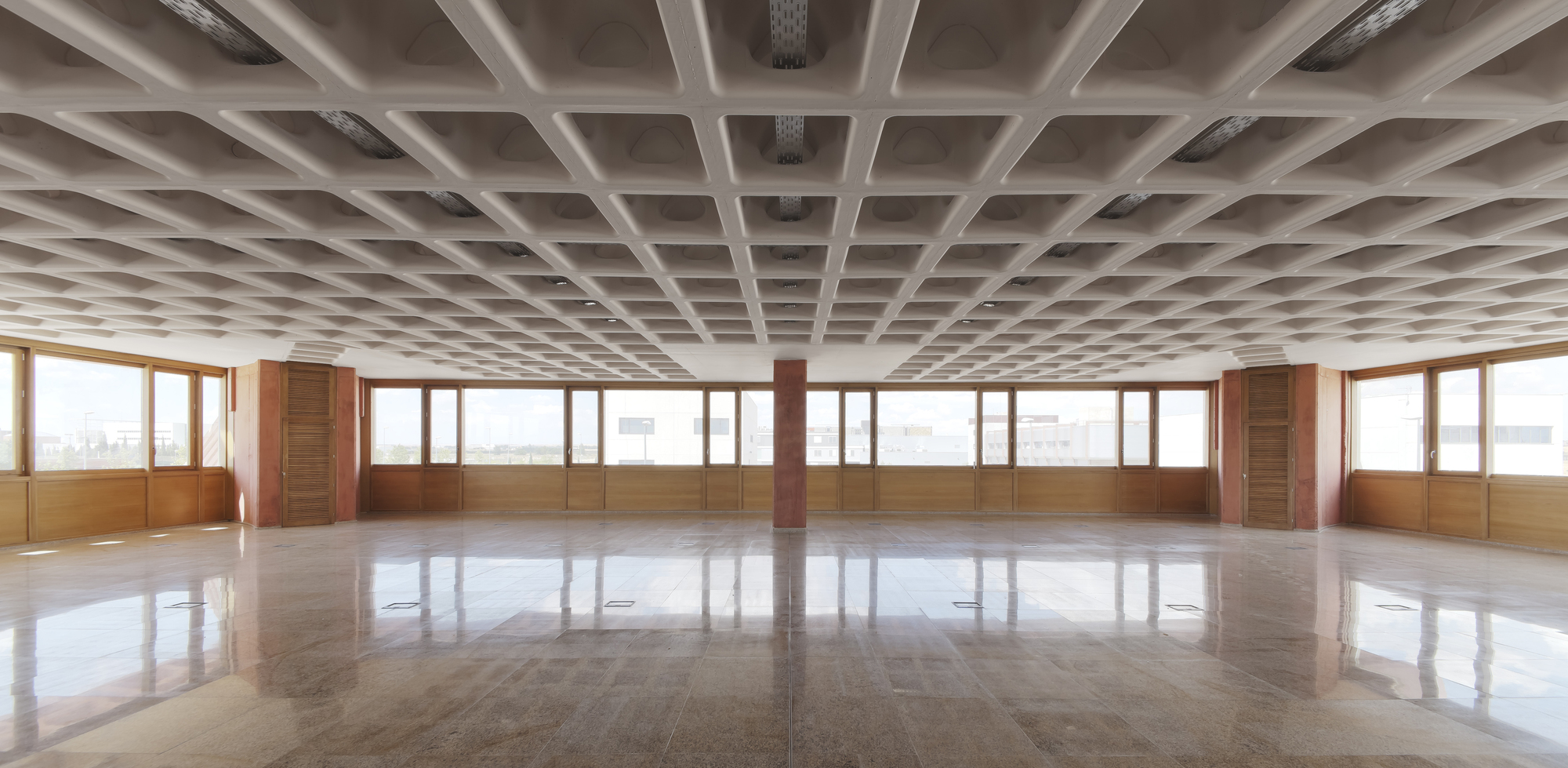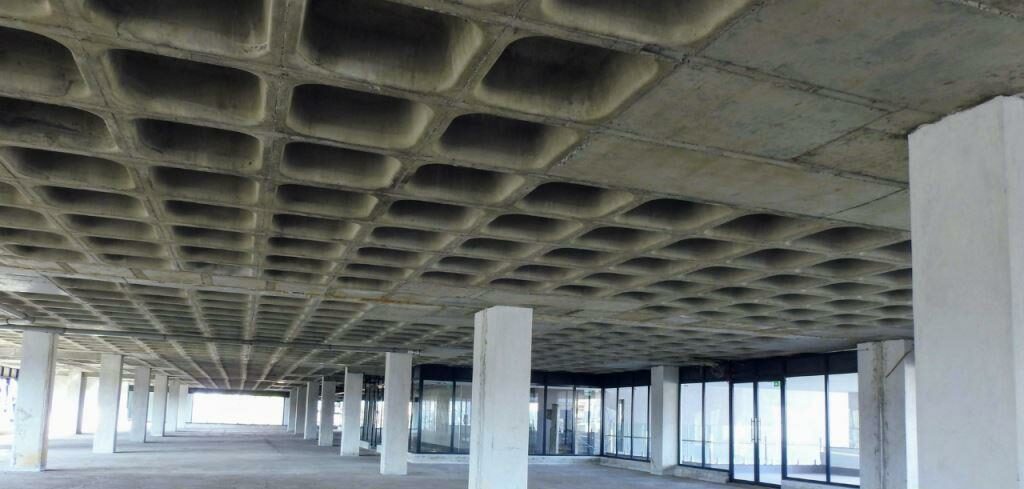
In the ever-evolving world of construction, engineers and builders constantly look for solutions to keep up with the demands of urbanization while ensuring sustainability. The waffle concrete slab is one such innovation that has gained popularity in recent years.
This construction technique offers everything one looks for while investing time and money. It offers efficiency, strength and aesthetics that make it a popular choice for various building projects. In this article, we will explore the magic world of waffle slabs whilst covering various aspects including design, advantages, applications and benefits followed by a critical overview. So, fasten your seatbelts peeps!
Understanding Waffle Concrete Slabs
What Is A Waffle Slab?

A waffle slab, also known as a ribbed slab or grid slab, is a structural system commonly used in building construction to support floor loads efficiently.
Deriving its name from the grid-like pattern of waffles, waffle slabs are engineered to optimize the distribution of loads while minimizing material usage. This makes it both structurally efficient and cost-effective.
The primary component of a waffle slab is a flat slab which acts as the load-bearing surface. The waffle-like rib elements form a grid pattern underneath. You will often find these ribs or beams in the shape of inverted T’s or rectangular cross-sections. Voids form within the slab at the intersections of the flat slabs and ribs. This void reduces the overall weight and allows the incorporation of utilities such as plumbing and electrical wiring.
Learn More: Structural Engineer in Woodford
Anatomy of a Waffle Slab
The structure of waffle slabs consists of three components.
Ribs: The elevated and reinforced parts of the slab that make the waffle pattern are referred to as ribs. Ribs are the primary component of concrete slabs that bear the complete load of the structure.
Void: The spaces between the elevated ribs create a void, thus the name. Depending on the construction type, this void can be left open or filled with some lightweight materials to further increase stability.
Reinforcement: The sole purpose of reinforcement is to enhance the strength and durability of the structure. It is often accomplished by placing a steel mesh or bar within the ribs that extends to the void.
Philosophy Behind The Design
The reason why waffle concrete slabs are a preference of builders lies in the philosophy behind the design. These structures were innovated keeping one thing in mind i.e. to maximize the stability while minimizing the material usage. This idea not only makes the design efficient but cost-friendly as well.
Types of Waffle Slabs
Waffle concrete slabs offer several variations to suit your construction needs. Some of them are listed below:
1- Flat Plate Waffle Slab

No doubt, this is the simplest form of waffle slab. It features a regular grid of beams and ribs with a flat top surface. It is considered the most cost-friendly variant and is commonly used in residential buildings.
2- Two-Way Waffle Slab
In this type, the ribs and beams intersect at right angles. This creates a grid that evenly distributes the loads in both the X and Y directions. This design is suitable for larger spans and heavier loads. It can be seen in commercial and industrial buildings.
3- Three-Way Waffle Slab
To explain this type simply, it has just an additional rib added to the two-way waffle slab. The slab is added diagonally which creates a three-dimensional grid. It increases the load-bearing capacity and thus, can be used for larger spans. This makes it suitable for complex architectural designs.
4- Economical Waffle Slab
An economical waffle slab features irregularly spaced ribs and beams. This is done to reduce material costs and optimize structural efficiency. However, engineers need to design the layout carefully to avoid any mishaps.
Learn More: Structural Engineer in Stafford
Advantages of Concrete Waffle Slabs
1- Cost Efficiency
Waffle concrete slabs are cost-efficient as they reduce material usage and simplify construction. As the material usage decreases, so does the transportation cost, thus, further cutting down the expenses.
Moreover, the voids in the slabs can act as conduits for electrical and mechanical systems, reducing the need for additional ductwork. It further cuts down the cost by eliminating the need for labour-intensive trenching.
2- Weight Reduction
Yes, concrete waffle slabs are budget-friendly but that’s not the only reason behind their popularity. Their primary advantage lies in the immense capacity of weight reduction.
3- Structural stability
Waffle pod slabs are a perfect pick for you if you want your generations to enjoy the same structural space without experiencing any major damage to the facility. As this system offers greater resistance to cracking, your unit is built to last longer.
4- Enhances Safety
What’s the point of spending millions on constructing buildings if they are to collapse with the slightest overload? Waffle concrete slabs offer greater resistance to seismic activity than flat slabs. This makes them perfect in areas that often experience earthquakes.
5- Aesthetic Appeal
Apart from their functional benefits, waffle slabs offer a great aesthetic appeal. The ribs and void are an architectural feature in itself.
Where To Use Waffle Slabs?

The versatility and unique properties of concrete waffle slabs make them suitable for a variety of construction projects.
Residential Buildings
These slabs are becoming an increasingly popular option for residential buildings. They are a cost-friendly option and if used with proper insulation, work best in soundproofing buildings. As it reduces the weight of the foundation, it can be advantageous in regions with poor soil conditions.
Commercial Structrures
Commercial structures such as offices and spacious retail areas benefit from this structure due to the combination of strength and cost-efficiency. They allow you to create large, open spaces without the requirement of extensive supporting columns.
Institutional facilities
Waffle slabs are an ideal solution for industrial facilities such as schools, hospitals and government facilities as these structures often require large, unobstructed spaces.
Challenges and Considerations
Like any other construction technique, waffle concrete slabs have their challenges and considerations. Let’s go through each one of them so that you don’t end up wasting your money.
Soil Assessment
Before you start with your waffle pod project, a thorough soil assessment is a must. The quality of the soil should be tested to measure its load-bearing capacity and to see if it can support the slab structure built upon it. If the soil is unsuitable, you may need to add extra reinforcements or modifications. This may increase the construction cost as well.
Site Accessibility
Waffle pod slabs have a specific construction process and require the help of heavy machinery for placing the pods, reinforcing steel and pouring concrete. So, it is crucial that the site is easily accessible for the transportation of heavy machinery. In case the site has limited access, you will have to spend some extra bucks.
Maintenance
Like any other foundation, regular maintenance and repair of waffle pods are necessary. This enables you to heal any cracks or twists in the flooring before it leads to a big mishap.
Quality Control
Maintaining the quality of the material and technique used during the construction of waffle pods is highly crucial. A slight compromise on the material quality and your building will collapse within a few years. It is essential to monitor the proper installation of the pods, usage of the accurate reinforcement and a thorough soil assessment prior to the construction process.
Acoustic Considerations
As compared to flat slabs, waffle slabs transmit more noise and vibration due to the voids created between the ribs. This isn’t something appreciated much especially in residential buildings. To avoid sound transmission between floors, some extra insulation in the voids may be needed. This will add more to the total construction cost.
Checkout: Structural Engineer in Gold Coast
Are Waffle Pod slabs banned in Australia?
In recent years, Australia, especially Melbourne has experienced a setback with waffle pod slabs. Thus, the government has started warning people about the risks associated with this type of foundation.
As we know Melbourne has highly reactive soils, and the extremely wet weather in recent years has further aggravated the issue. The main complaint was that the residences of the homeowners were twisting and cracking as the foundation started heaving as the soil moved. Most of the builders were using polystyrene cubes to fill the void, which is characteristic of waffle slabs.
However, in this situation instead of blaming the type of foundation, builders should focus more on coming up with solutions such as improving the drainage or not filling the void with polyester cubes.
Are Waffle Pods/ Slabs The Best Pick For Construction?
Whether waffle pods are the best pick for you or not depends on the specific needs of the project. Yes, they offer advantages in terms of efficiency, material usage, and layout flexibility but one must not ignore the higher initial cost and maintenance challenges that accompany these advantages.
For smaller construction projects, regular solid slabs are a better option. However, for larger projects where energy efficiency is a priority, waffle pods are your friend.
How to Make Waffle Concrete Slabs?
We have already covered almost everything that revolves around waffle concrete slabs. Here’s a visual demonstration of how to construct such a slab.
Concluding Thoughts
In conclusion, waffle concrete slabs are the unsung heroes of the modern construction world. With their honey-comb-like structure they not only add aesthetic appeal to the building but also evenly distribute the weight making it more stable than ever.
We hope that this article has helped you get a deep insight into this structural marvel
